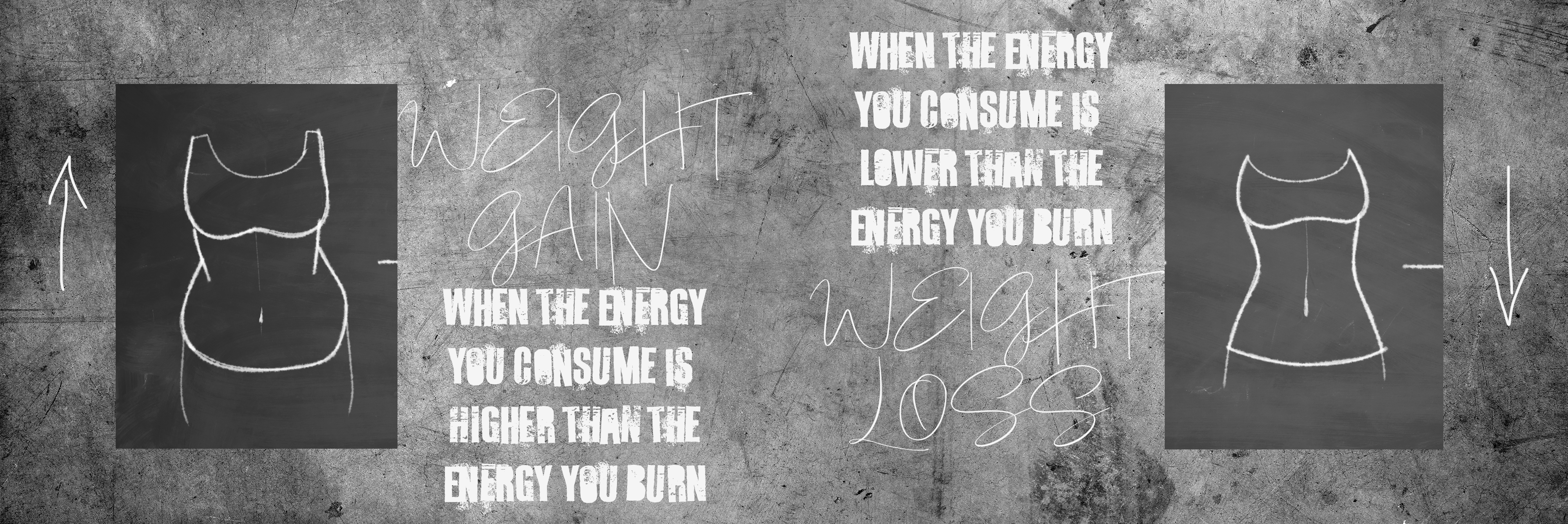Why does any weight loss diet work? Because the energy out was greater than the energy in, which created a deficit. In contrast if you gain weight it was because the energy in was greater than the energy out, creating a surplus. The happy middle ground is maintenance, where calories in and calories out are in balance.
Too many people go *insert whatever diet you like here*, then claim it’s a miracle diet that absolutely everyone should be on. They also claim that’s the reason they lost weight. However, more simply it was just the method which created their deficit and worked for them as an individual. There’s no *magic* diet that suits everyone, because everyone is different! We have different tastes, schedules, budgets, to name only a few things. For successful weight loss diets, it’s about finding a pattern of eating that works for you.

Your intake is the calories from the food and drink you consume. Everything counts!
While everything counts just keep in mind a few things. Quite a few food tracking apps are not reliable, and food labels by law are allowed a certain margin of error (in the UK the government allows up to a 15% variation from the label).
Also your own individual intake should be calculated based on your height, weight, age, activity level, body composition and more. The basic government guidelines for your daily intake (2500kcal for men/2000kcal for women) are often used to work out daily RDA’s on packaging too. That’s ok when looked at general population data, but not so much when looking at it for yourself. Further down this article, you’ll see how to work out your approximate daily intake.
This is your Total Daily Energy Expenditure (TDEE – the first of many acronyms in this section). Your TDEE is made up of several parts – some of which we can manipulate more easily than others.
Keep in mind if you use activity trackers (like an Apple Watch or Fitbit for example) they are not very accurate in tracking our actual expenditure. I like to think they are however consistently inconsistent! Personally, I use mine to keep myself accountable. This data is relative for me and how active I am on a day to day basis, rather than trusting or taking the number it shows literally. Definitely don’t use the number to “eat back” expended calories!
CICO (Calories In Calories Out) may sound simple in principle, and it’s very important to understand why any diet works, or doesn’t work.
Knowledge is power and explaining the fundamentals will help you be able to tell whether the next fad diet that comes along is just that, a fad. Part of why there is so much confusion in the health & fitness industry is because the basics are dressed up in so many costumes you can’t tell what’s underneath.
There are a few different formulas to calculate your estimated daily expenditure. There are lots of free online calculators, which are as good a place as any to start. From there, depending on your goals, you can work out a plan on how to achieve them. As the saying goes all roads lead to Rome, and how you want to get there (by which method) can be one from a huge number of routes. Find the right option for you.
There’s no exact formula – especially in a dynamic system where you can’t isolate one thing without effecting another. Once you have an estimate for your TDEE, take it as a starting point to work from, not an absolute exact figure. Then depending on how you make progress, adjust accordingly. With this keep in mind, progress is rarely linear. If you have all the right processes in place, don’t give up too soon!
Food tracking is a great tool, but isn’t essential (and some people would rather not do it). That said if you’ve never tracked I would recommend, even if just for a week or two, to try it. It gives you a better understanding of what you’re eating and can help you make smarter choices. You get better at eyeballing portion sizes too.
You do need to track your progress in order to be able to assess whether your current plan is working. This can be by weighing yourself, taking measurements, or photos. If the scales cause you any stress or anxiety, they aren’t essential. Look at how your clothes fit, and more importantly how you feel.